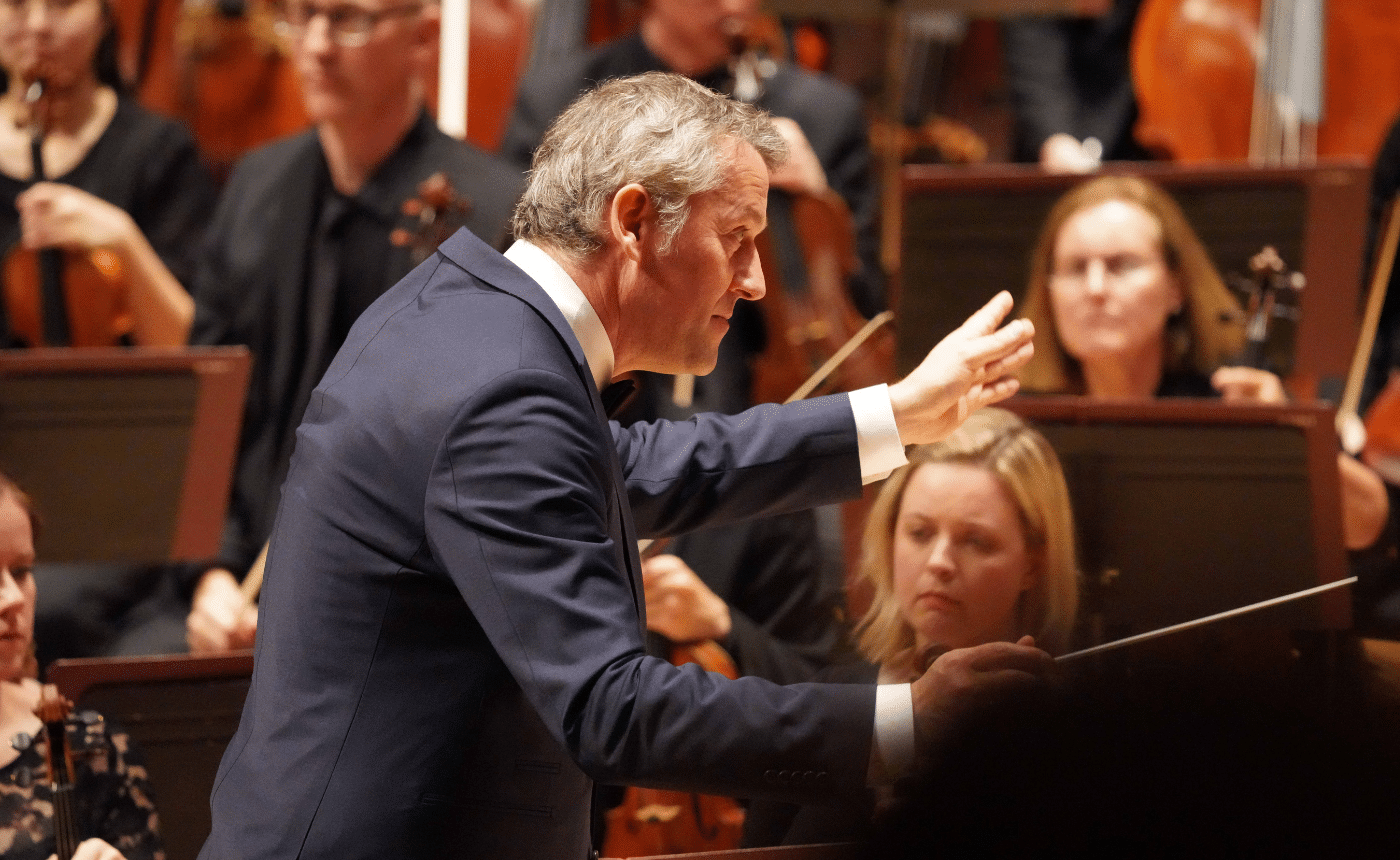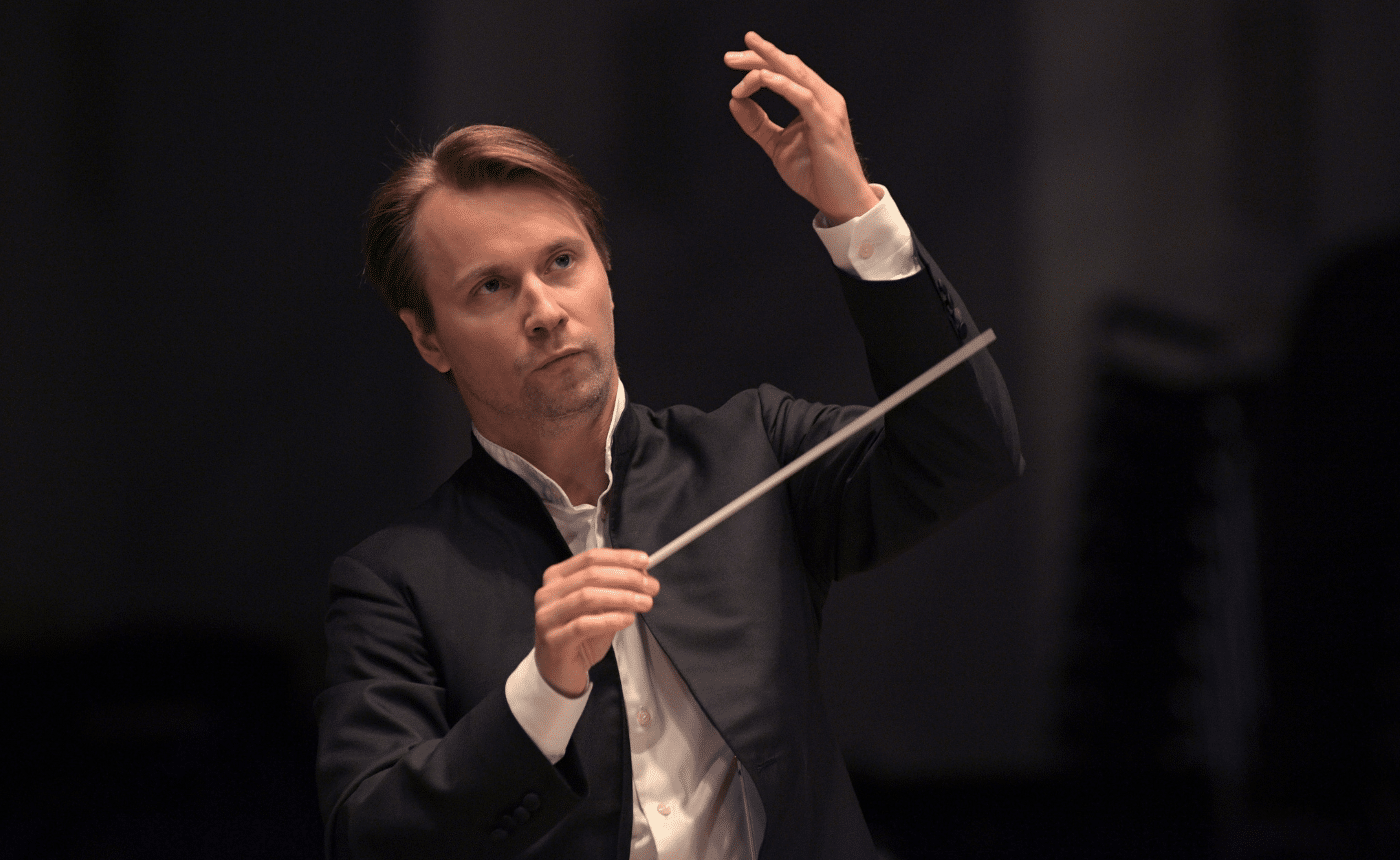Nielsen – Symphony No. 4, op. 29 (“The Inextinguishable”)
by Jeff Counts
Instrumentation: 3 flutes (3rd doubles piccolo), 3 oboes, 3 clarinets, 3 bassoons (3rd doubles contrabassoon), 4 horns, 3 trumpets, 3 trombones, tuba, 2 timpani, strings.
Duration: 36 minutes in four movements (played without pause).
THE COMPOSER – CARL NIELSEN (1865-1931) – Nielsen’s domestic life continued to be a source of great stress in 1914. Infidelities (his) and the generally difficult circumstances of a multi-city professional life (his and hers) had begun to put significant strain on his marriage. As always, Nielsen attempted to weather the impasse through hard work as a conductor and educator but the mounting personal pressures where sure to necessitate some self-reflection in his compositional life as well.
THE HISTORY – Symphony No. 4 (1916) dates from this period and it constituted Nielsen’s strongest and most iconoclastic symphonic statement to date. This was partly attributable to his evolving maturity as a composer but also due to the inclusion of something rather new to his sound so far – outright conflict. If the 3rd Symphony was created to positively convey the musical characteristics of the human spirit and the natural world, the 4th could be read as an effort to present music as discrete and equal to man and nature, not merely their expressive proxy. It was the idea of music as a force in and of itself, capable of giving voice to “The Elemental Will of Life.” Nielsen believed life and music to be enduring in the truest sense of the word and stated as much in the preface to the score. “Music is life,” he wrote, “and, like it, is inextinguishable.” The title of “Inextinguishable” was given to the symphony by Nielsen not as a programmatic reference but as “a suggestion as to a way into this, music’s own territory.” It did not mean the symphony lacked a readable dramatic arc because for a thing to be proven inextinguishable it must be put the test. Hence the aforementioned conflict as depicted in the final movement by dueling timpani in what must be among the most physically realistic journeys from tension to reward in all of music. The four movements of the symphony are performed without pause, which intensifies the experience by keeping the thread taught for the entire 30-plus minutes. This symphony often invites comparisons to Sibelius but these suggested similarities do both men harm. “The Inextinguishable” was pure Nielsen, which then and always spelled pure (and peerless) originality.
THE WORLD – 1916 was the year of the Easter Rebellion in Ireland, the Battle of the Somme in France, the killing of Rasputin in Russia and the publication of James Joyce’s Portrait of the Artist as a Young Man.
THE CONNECTION – Nielsen 4 was last performed by the Utah Symphony back in 2005. Assistant Conductor Scott O’Neil was on the podium.











